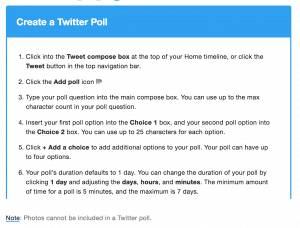Crisis Communication in Higher Ed: Pepperdine’s Wildfire Response
See how Pepperdine University redefined crisis communication in higher ed by prioritizing safety, faith, and storytelling during the California wildfires.
Branding
A common challenge we help our education clients overcome is understanding where they stand as a brand. While not an exact science, there are ways to gauge your school’s brand perception.
The concept of brand perception is a bit nebulous, but it’s an important topic for school marketers to consider as you work to raise awareness of your school and what it has to offer.
Brand perception is how your audiences see your education brand.
It’s the feeling they get when they see your logo. It’s the memories they have of their time in your classrooms. It’s the stories that get played back in their imagination when they hear your school’s name.
“A brand is the set of expectations, memories, stories and relationships that, taken together, account for a consumer’s decision to choose one product or service over another.” – Seth Godin
Because brand perception is made up of all these various components that you have no control of whatsoever, gauging your school’s brand perception is like herding cats.
Again, you do not have control over people’s perception of your brand.
But you can gauge it fairly accurately, and then design your messaging strategies to build trust in your brand based on how you think your audience sees you.
Remember the old marketing adage, “Perception is reality”? It’s probably even truer today as students, alumni, and donors can share their experiences and opinions of your institute on more platforms than ever before.
If you don’t have any idea of what people are saying or feeling about your school, you’ll be flying blind, thinking that you’re more loved (or disliked) than you are.
So to get the “reality” of your brand perception, there are several ways to do it.
Focus groups are a labor and time-intensive method, but if you want to pull out more complicated or nuanced opinions from your audiences, they are a great way to go.
For the best results, pick one aspect of your education brand or school to talk about with your audience. Otherwise, the discussions will never end as you go over every detail of life at your school or some other topic.
Make sure that you are recruiting participants for your focus groups from a clearly identified audience. Get as specific about them as possible.
One last thing about focus groups: When you’re talking with your audience, start out with positive questions like “What is your best memory of living in the men’s dorm?” These questions “loosen up” the participants before going to negative questions like “What was the worst thing that happened to you while living on campus?”
Survey platforms like SurveyMonkey or Google Forms are making the task of creating and distributing surveys easier and more economical. They can be a fast way to aggregate a large volume of opinions, and many survey tools can graphically represent the data that you collect.
One piece of advice here: Come up with a good incentive for filling out the survey.
Even though it would only take 5 minutes of their time, people are notorious for ignoring survey requests. You’ll get a much better response for your survey if you offer an incentive for taking the five minutes out of their day for filling it out.
Like surveys, social media polls are cheap and easy. Also like surveys, most social media platforms give you insightful analytics of the results of your polls.
The disadvantages of a social media poll are that your questions are limited to a certain amount of characters and normally they limit the types of responses your audience can give you. For example, Twitter polls only allow up to four multiple choice questions of 25 characters each.

Via https://help.twitter.com/en/using-twitter/twitter-polls
Social media polls have a short time limit to them, too. After a few days, they’ll disappear from your feed.
But if you want a quick peek into how your audiences perceive a certain topic or question, social media polls are great for that.
While we’re on the subject of social media, there are some innovative resources out there to give you more insight into the opinions and behaviors of your school’s social media followers.
Tools like Tweetdeck, Google Alerts (free), or paid tools like Hootsuite, NUVI, or Brandwatch aggregate what your audience is saying about your brand. They can tell you which posts are being shared, how many likes you receive, and a rough idea of the organic reach of your posts.
If you’ve got a little money to spend on these services, it can be a worthwhile investment.
Even online, people do vote with their feet. That’s why web traffic is one of the most accurate ways to gauge your school’s education brand perception.
Pages on your site that have higher amounts of traffic give you a genuine look into what your audience wants to hear more about from you. Likewise, pages with little to no traffic are pieces of your brand that just do not interest your audience.
Another clue into your brand perception offered by web traffic analytics is to see where your traffic is coming from. Is it coming from sources that are positively disposed towards your education brand, or critical of your brand?
One thing to note here: Traffic data will not tell you how your audience feels about the content on your site, just that they were there or not there. It’s highly possible to have something on your site that negatively impacts your audience. Keep that in mind.
There you have five powerful tools to get your ear to the ground and hear what your audiences are saying, feeling, and sharing about your education brand.
As you get closer to understanding your school’s brand perception, remember that every education brand has people who are devoted to it, and others who are critical of it. If you’re encountering critical perceptions of your brand for the first time, or much more than you thought you would, that’s a good thing.
That means you’re getting closer to the “reality” of your brand perception. Now, you have the information you need as a school marketer to craft messaging that can build trust in your brand.
Need a brand audit to help you find out where you are and where to go? Get ahold of us today!
Set yourself free from your shrinking marketing budget with my popular ebook Marketing on a Shoestring Budget! This ebook is jammed with practical ways to produce high-quality marketing on the cheap.

No hype. No pie in the sky. Just real solutions for getting the job done with the budget you’ve got.
Featured Image by BillionPhotos.com via Adobe Stock
Subscribe to The Higher Ed Marketer podcast today!